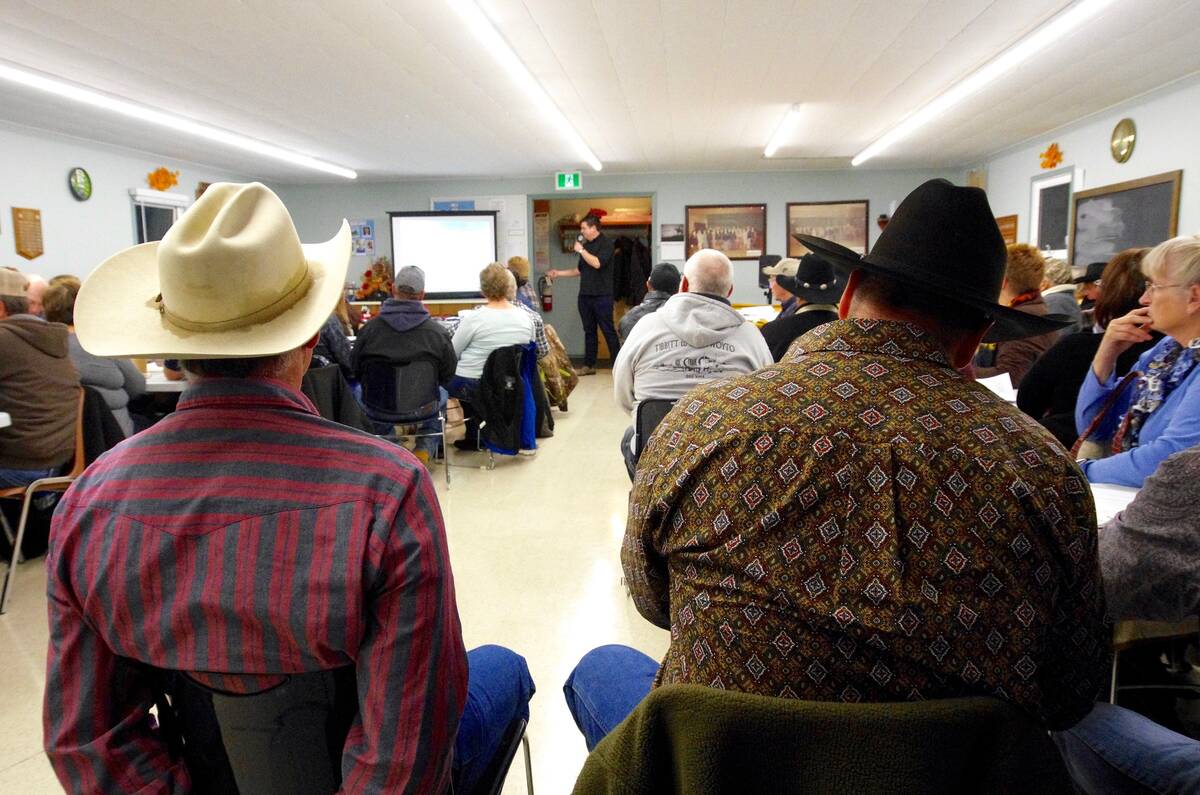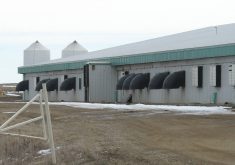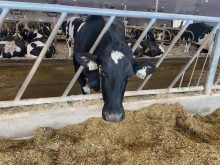The Manitoba Pork Council is quietly celebrating a string of low-key wins during its fall producer meetings.
From falling numbers of PED cases to a modest barn-building boom and new trade deals that will stabilize and expand markets, long-term trends look positive, the group says.
Why it matters: The industry needs to stay focused on the future in the midst of some short-term trade hiccups that have eroded prices and threatened to undermine confidence in the sector.
“One has to have confidence in the future,” Andrew Dickson, MPC general manager, told the Co-operator during a break in the meeting. “Otherwise you might as well stay home in bed and pull the sheets over your head, and as an industry we won’t do that.”
Read Also

Don’t blow off that beef producer meeting
Local veterinarians and livestock experts often speak at beef producer group events. They have good advice for the farmer on vaccines, calving, beef herd management and more.
PED cases down
Last year at this time, there were 80 porcine epidemic diarrhea cases on the books. So far in 2018, they number 14.
The sector is still on high alert, said George Matheson, MPC chair and a farmer in the Selkirk area. He said the lower numbers are the dividends of an investment made during the height of the outbreak last year when MPC hired a swine health program manager to take proactive action and ensure clear industry communication.
“I think it’s one of the best decisions we’ve ever made as an organization,” Matheson told the meeting in his introductory remarks.
Jenelle Hamblin, who took on the role last fall, said the ability to share information quickly has been invaluable, in particular the Manitoba Co-ordinated Disease Response (MCDR) system that uses electronic communication to share disease information confidentially within the industry.
Communication in a disease outbreak can help limit spread of the disease to other farms and can also help affected producers get the support they need, Hamblin said.
However, the system needs co-operation from producers to be effective. Producers need to sign an MCDR confidentiality agreement that gives MPC the ability to share their information with other producers in case of an outbreak. While pork producers were initially fearful, Hamblin said the system won them over by reducing PED cases. More than three-quarters of the producers in the southeast corner of Manitoba, the region hardest hit, are now participating.
“But here’s what we have to fill in,” she told the meeting, flashing up a map of the many premises outside that hot zone that have yet to sign up. “I really urge producers to sign the agreements.”
Matheson seconded that sentiment, noting the industry worldwide is now fretting about the emergence of African swine fever. While no cases have yet been found in North America, he cautioned producers they’d need to be ready if they were.
“This is not good news for us,” Matheson said.
Truck washing
Dickson said he remains hopeful the industry can negotiate changes to the livestock truck washing regulations, which could also help control disease.
Right now, trucks returning from the U.S. are legally required to wash out before crossing into Canada, which may ironically be exposing them to disease at the U.S. washes because water at those stations is recycled.
Dickson said the transport industry “has little faith” in the U.S. washes and so rewashes and disinfects once back in Canada. The washes also aren’t necessarily in convenient locations for trucks bound back to Canada, which makes the trips logistically less efficient.
“The transporters are very eager to move this forward,” Dickson said.
The stumbling block remains federal regulations but Dickson said a recent meeting with the head of the CFIA leaves him optimistic.
“He seemed sympathetic to the situation,” Dickson said.
Rebuilding boom
As Manitoba’s hog facilities near the end of their life cycles, loosened provincial regulations have enabled the sector to begin rebuilding, Dickson said.
The single most important change was the removal in 2017 of a requirement for anaerobic digesters to treat manure in any new barn, he said.
Dickson told the meeting that over the past year 8,350 sow places have been added, 35,800 finisher places have been built or are under construction. As well, municipal councils have approved a further 63,300 and a further 81,500 are at some stage of the planning process.
“We’re looking at the addition of 160,000 total placements by the end of 2019 or early 2020,” Dickson said.
One MPC initiative that’s played a role in smoothing the way for this effort is the Swine Industry Development Corporation. It provides a resource for producer, investors and others looking to build and contracts with consultants to provide services at cost. It is, in essence, a one-stop shop to help get barns off the drawing board and into operation.
So far it’s had four contracts since beginning operation in February of 2018 and garnered praise from pork industry observers such as market analyst Kevin Grier.
Dickson said there’s little doubt it helps prospective barn builders navigate the process by anticipating and addressing potential objections early in the process.
“In once case I know the hearing was scheduled for 8:30 in the morning,” Dickson said. “By 9:15 it was all wrapped up and the councillors were congratulating him on his proposal.”
Working through the problems beforehand is going to be very important, Dickson said, especially now that municipal governments are in a more prominent role in the process.
“There are more voters out there who aren’t hog producers than are,” Dickson said. “It’s a math thing.”
Trade triumphs
In recent months the pork sector has been on the receiving end of trade troubles.
U.S. hog producers found themselves the target of tariffs from China and Mexico, and the trouble quickly seeped north of the border. Canadian prices are essentially based on U.S. pork prices, with the currency difference taken into account.
Now that the USMCA agreement has quelled fears of a NAFTA meltdown and the CPTPP is opening doors to Asian markets, Matheson said producers are hopeful the worst is behind them. Dickson agreed the agreements would help.
“We hope the USMCA means the Mexican tariffs will disappear fairly quickly and the natural flow of pork from the U.S. to Mexico will resume,” Dickson said.
He said the CPTPP agreement had two key wins for Canada. It gives the country continued favourable access to the important and established market of Japan. It also opened the door to building markets in Vietnam, a nation with three times the population of Canada and a voracious appetite for pork, he said.
“We know that it’s important when it comes to developing nations to get into the market early and work to develop it,” Dickson said.
The trade-related pricing woes did spark some talk of a made-in-Canada pricing mechanism for pork, but Matheson cautioned that would be difficult.
“When you’ve really only got one customer, you don’t have much bargaining power,” he said. “I think it’s a bit of a ‘be careful what you wish for’ situation.”
















